
Lead training a cat

Allie Simpson
17 August 2021 | 6 minutes read
Walkies aren’t just for dogs, you know! Here we discuss how cat owners can get feline friends used to a harness and lead for lots of walking adventures.
Table of Contents
- Walking a cat on a lead
- The benefits of a cat harness and lead
- How to put a harness on a cat
> How to put a H-harness on a cat
> How to put a step-in harness on a cat
> How to put a jacket harness on a cat
> Can a cat wear a harness all the time? - How to lead and harness train your cat
- Remember to treat cats as individuals
- A few extra bits to know about leading training a cat
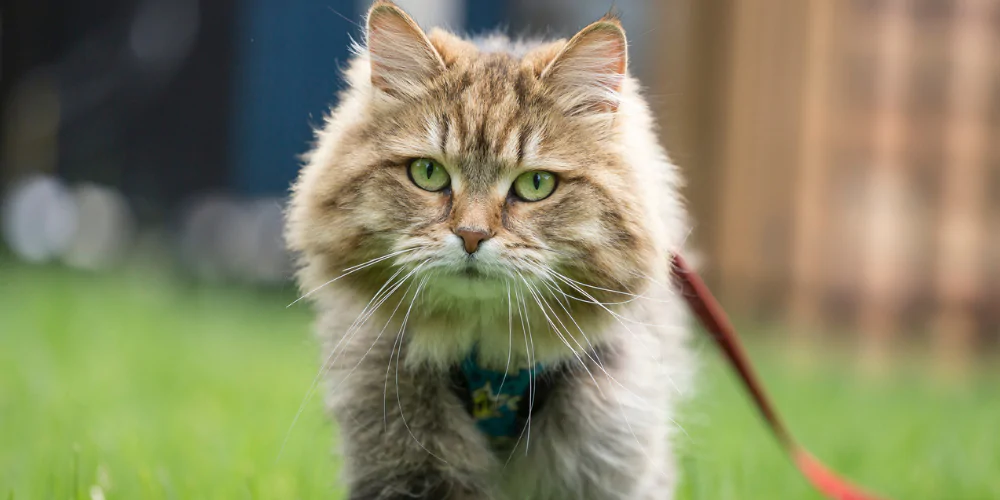
Walking a cat on a lead
When taking your cat out for a walk, it’s important to attach the lead to a harness. Cats can easily slip their collars, or the lead could become tangled if it’s just attached to a collar. One of the risks of a tangled lead is choking, which we definitely want to avoid.
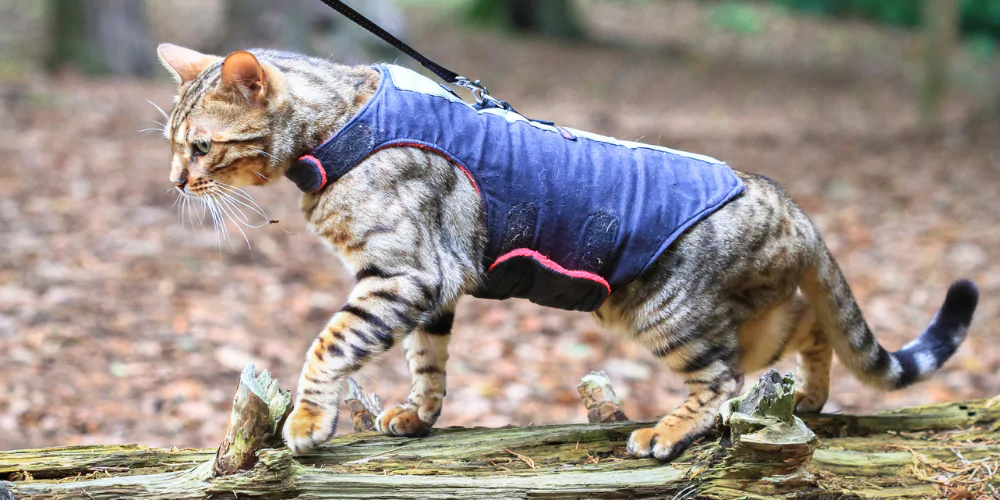
The benefits of a cat harness and lead
One of the main ways you can use a cat harness and lead is to help your cat get used to being outdoors. If your cat is nervous in nature, walks outdoors can help build up their confidence around various urban and rural sights and sounds, as well as meeting new people.
If you’ve moved house, or only welcomed your cat to your home recently, you may want to use a harness and lead to get your cat used to the local area before letting them outside alone to explore. Similarly, if you live near a busy road with lots of traffic, you may decide it’s much safer to walk your cat outdoors on a lead, instead of letting them roam free.
Taking your cat for walks also means they get their daily exercise, keeps them mentally stimulated, and helps them stay fit and healthy. Not just handy for walking your cat outdoors, a cat harness can also be useful in situations such as a trip to the vets or bathtime to help keep your cat still.
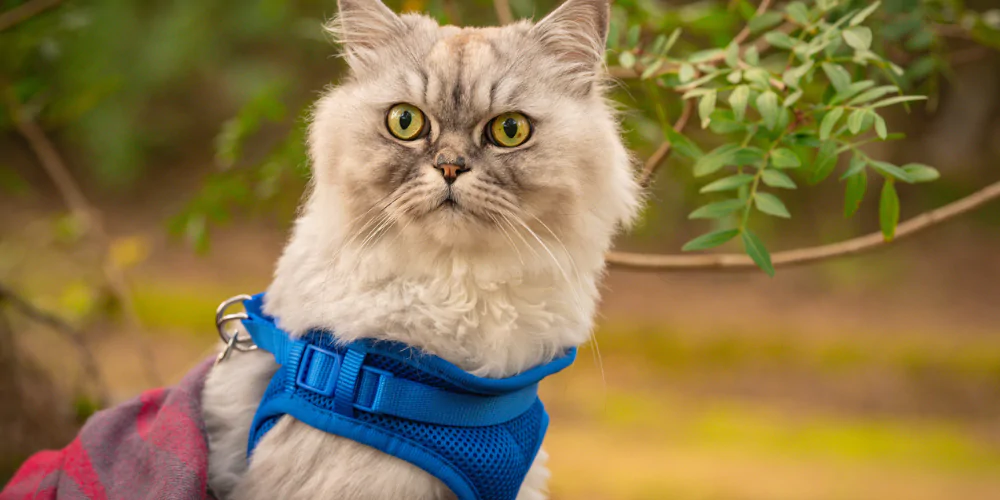
How to put a harness on a cat
There are various types of cat harnesses available for your cat. These include a H-harness, a step-in harness, and a jacket harness, all of which attach to your cat in different ways.
It’s best that you opt for a dedicated cat harness, as dog harnesses can be unsuitable. A proper cat harness will be more secure and comfortable for your pet, but you should always check that it isn’t too tight or too loose. You can tell it’s the right fit if you’re able to fit two fingers beneath the harness.
> How to put a H-harness on a cat
A H-harness is fastened at your cat’s neck and under their belly. The fact that this type of harness has fewer pressure points on your feline’s body may help them to feel more comfortable when wearing one. It also doesn’t have to be attached over their head.
> How to put a step-in harness on a cat
A step-in harness is sometimes referred to as a vest harness. Your cat simply steps into the harness and it is then fastened on your cat’s back. If your cat tends to pull a lot, a vest harness may suit better as the pressure points are spread out further across your cat’s body. Unlike the h-harness, a vest harness has to be placed over your cat’s head, and some cats may not be particularly pleased about this!
> How to put a jacket harness on a cat
A jacket harness is sometimes also referred to as a butterfly harness. This style tends to be a closer fit for your cat, and is fastened around their neck and chest. Because of it’s design, it may also be harder for your cat to wriggle out of this kind of harness.
> Can a cat wear a harness all the time?
Harnesses are used as a means of walking your cat, so you’ll need to think about how comfortable and safe they would be wearing one all the time. Outdoor cats like to climb and explore their surroundings all year round. This means they could overheat in higher temperatures or the harness could get in the way or become trapped on a branch.
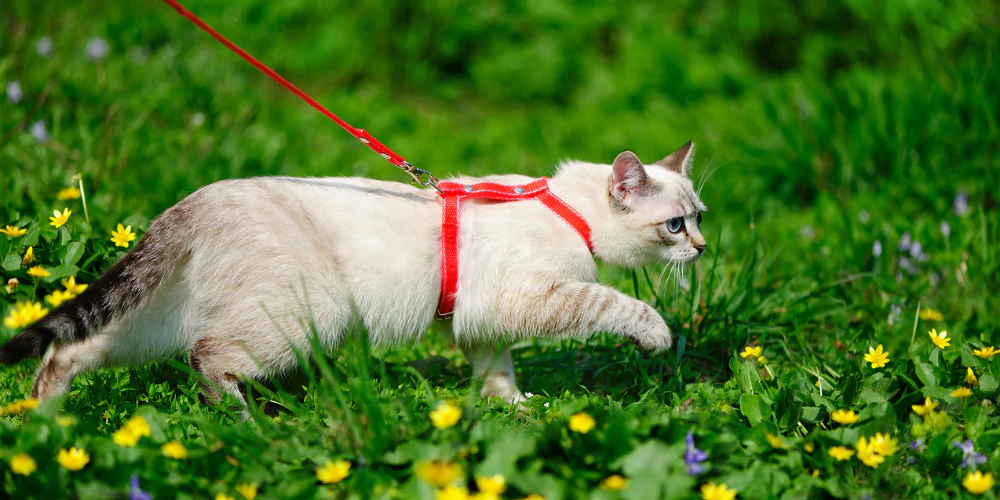
How to lead and harness train your cat
Lead and harness training a cat should always be slow and gradual, whether they’re a kitten or an adult cat. You may be eager to immediately take your cat out to start getting them used to outdoor walks and the harness, but this could overwhelm your cat.
Let’s break the process down:
- Start by putting on your cat’s harness indoors so your cat can get used to the feel of it. Keep in mind that it may take some practice and time for your cat to feel confident and find comfortable movement.
- Use cat treats as positive reinforcement to help your cat become comfortable with the lead.
- Begin walking in a quieter place first where there aren’t lots of distractions or things that could scare them, such as dogs or loud noises.
- If your cat is scared, don’t force them to walk on the lead or harness – take them home until they’re ready to try again.
- Stop and start every few days to help build up your cat’s confidence with using a lead and harness.
Eventually, you’ll be able to enjoy lovely walkies together with your feline companion!
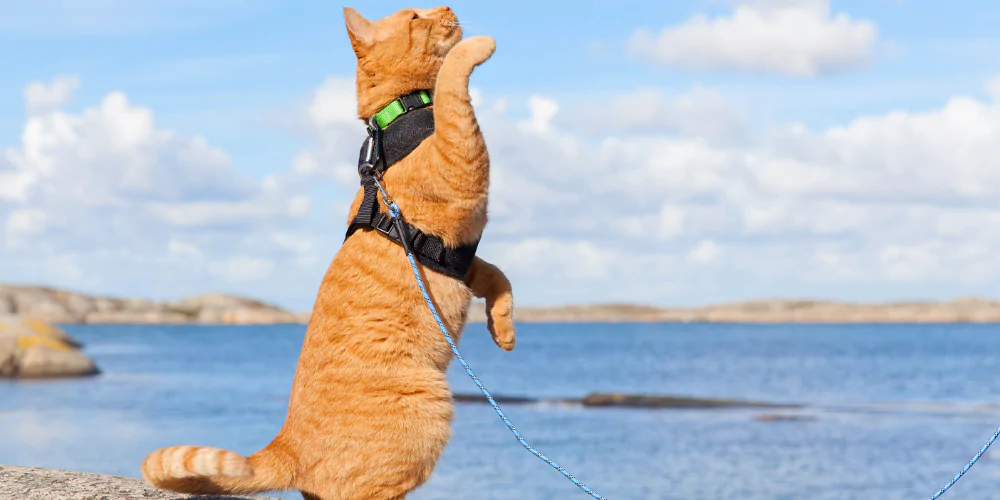
Remember to treat cats as individuals
We’re going to level with you – as fun as it may seem to want to walk your cat, not every kitty is going to want to try it, and that’s OK. Cats like to be in control and putting them on a lead can take that away from them. Some cats may even feel distressed as they can’t escape from anything which scares them.
Some of the more inquisitive and intrepid breeds may love a leash adventure. Other cats may not have access to outdoor space and so their daily walks are a chance to get fresh air and explore. Lead walking can also be an option for house cats that are showing destructive behaviour (and you’ve tried everything else to stop their boredom). Just take the time to get to know your cat and see how they respond to lead training.
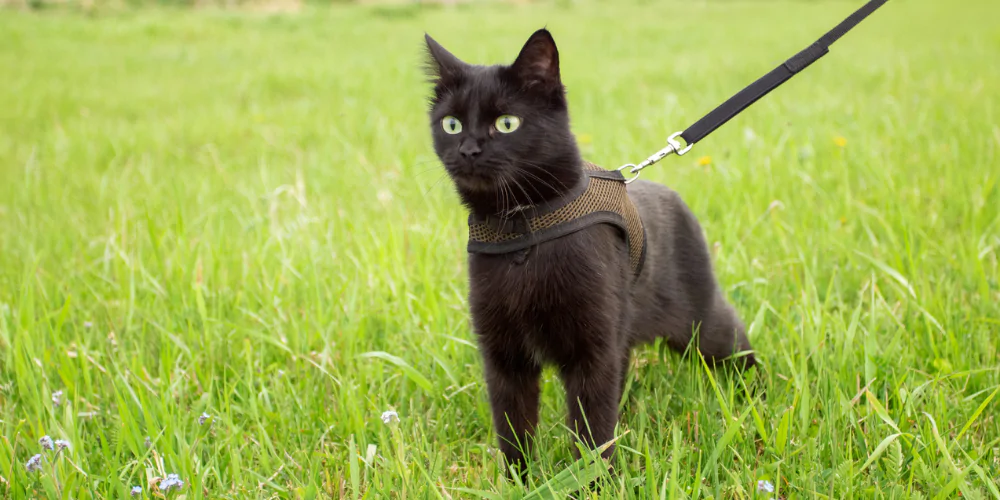
A few extra bits to know about leading training a cat
Before you take out your cat (especially if they mainly stay indoors), remember to paws and think about how to protect against nasties. We’re talking fleas, ticks, worms, and other cat-specific illnesses which may be picked up on walks or by spending time outside.
Another point on our cat-genda is about making sure that you microchip your kitty, in case they do manage to escape on a walk and need to be identified. This will be compulsory under the Action Plan for Animal Welfare.
We’re putting an end to pet prejudice. Join us in raising a hand, paw or claw in the fight towards fairness for all with inclusive cat insurance.


